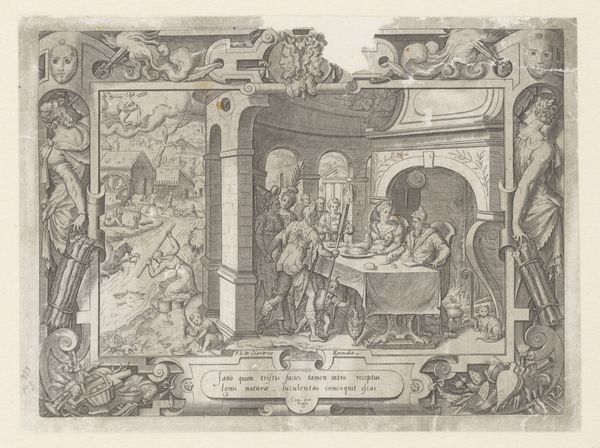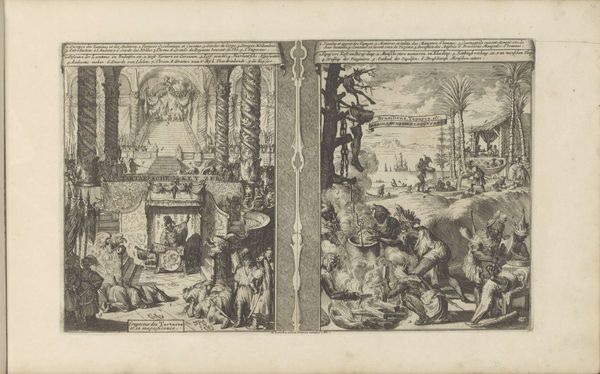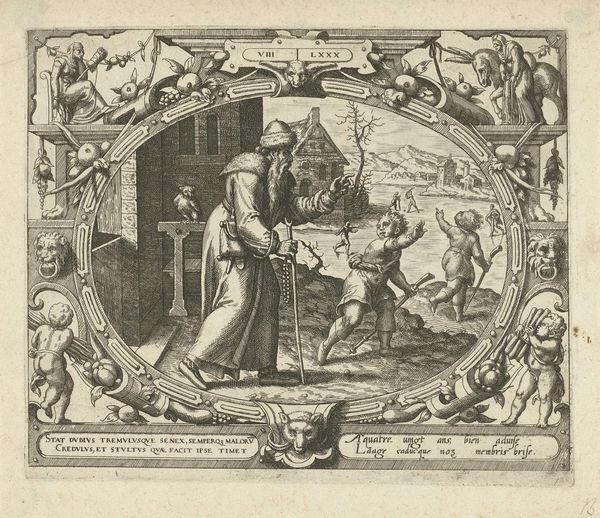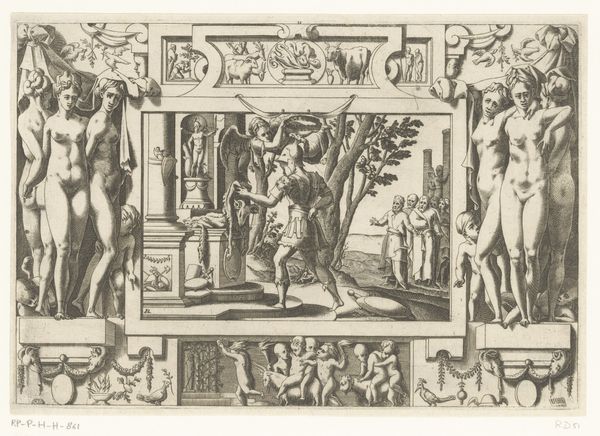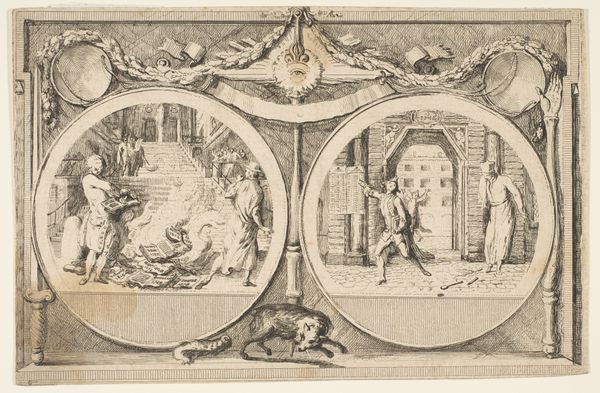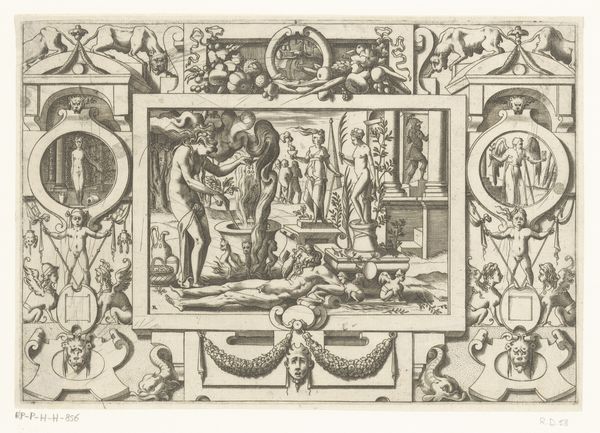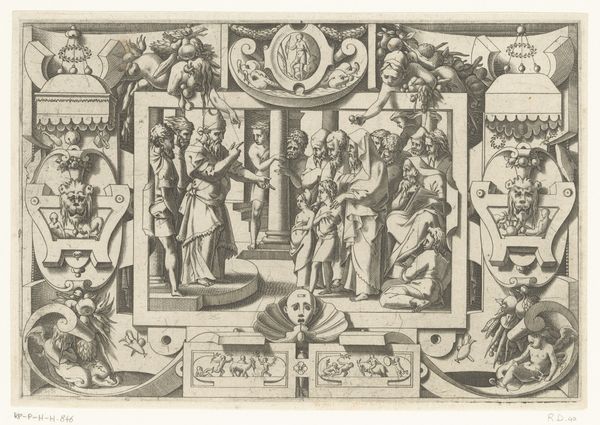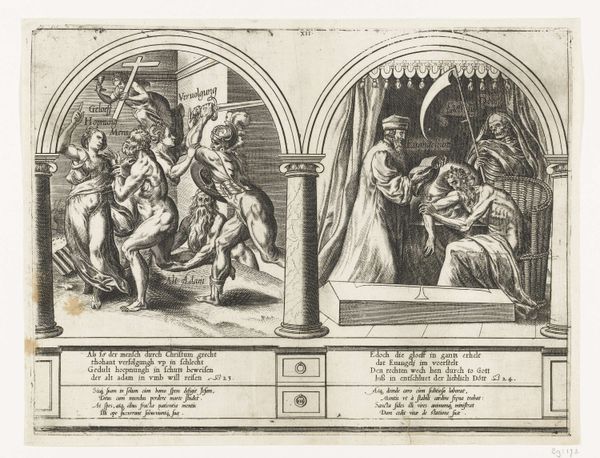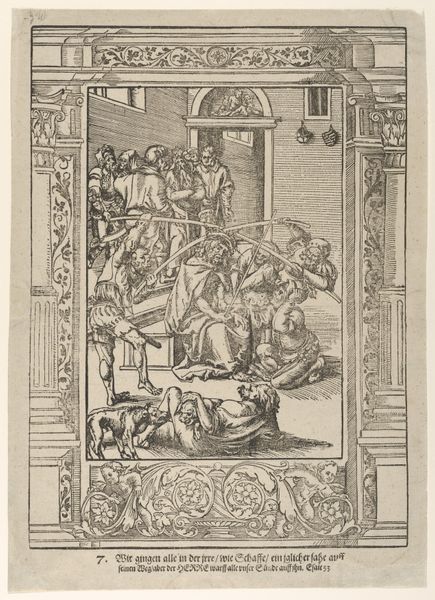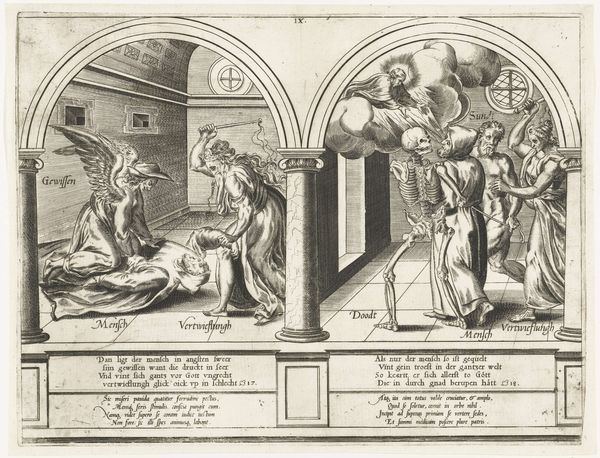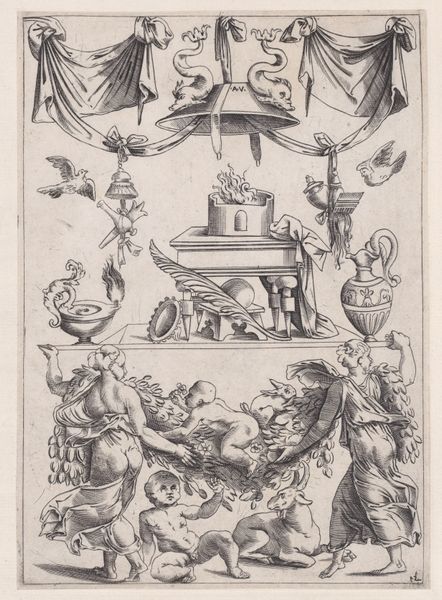
print, engraving
#
allegory
# print
#
landscape
#
figuration
#
11_renaissance
#
history-painting
#
academic-art
#
engraving
Dimensions: height 175 mm, width 237 mm
Copyright: Rijks Museum: Open Domain
Editor: This is "Mei," an engraving by Etienne Delaune, created before 1566, now at the Rijksmuseum. It has a dreamy feel to it, almost like a stage set. I notice that it features all these figures arranged within a very elaborate border. What exactly am I looking at, and how should I interpret it? Curator: Indeed. Disregarding its narrative elements for a moment, attend to the composition. Observe how Delaune employs the frame. Notice the repetition of forms—the curves of the musical instruments mirrored in the architectural details. And note, particularly, the use of negative space to accentuate the figuration. How does this visual rhythm affect your reading of the work? Editor: The rhythmic repetition gives the work a formal and ornamental feeling that subdues some of the individual meaning. So instead of seeing individual figures, I see lines, textures, forms relating to each other. Curator: Precisely. Delaune organizes depth through rigorous applications of linear perspective but flattens his picture plane through surface embellishment. What happens to the symbolic weight of the presented allegory? Editor: I suppose it shifts focus. Instead of an obvious allegory, Delaune provides a structured composition using both two-dimensional ornamentation with figures placed within the illusion of three-dimensional space. This affects my appreciation; the material execution now adds significant content, which makes the allegory much less obvious than before. Curator: Good. The balance between depth and flatness creates visual tension, forcing the viewer to constantly renegotiate their spatial understanding. Now, reflecting upon the dialogue between form and content here, what has struck you most? Editor: How the method and material—engraving, with all the hatching and fine detail—create the message of refinement, control and perhaps also elegance in addition to the narrative. It feels different, almost at odds with a painting that represents this allegorical image. Curator: Agreed. Attending to Delaune’s method grants access to new avenues of intellectual discovery, illuminating art beyond a narrative register.
Comments
No comments
Be the first to comment and join the conversation on the ultimate creative platform.
